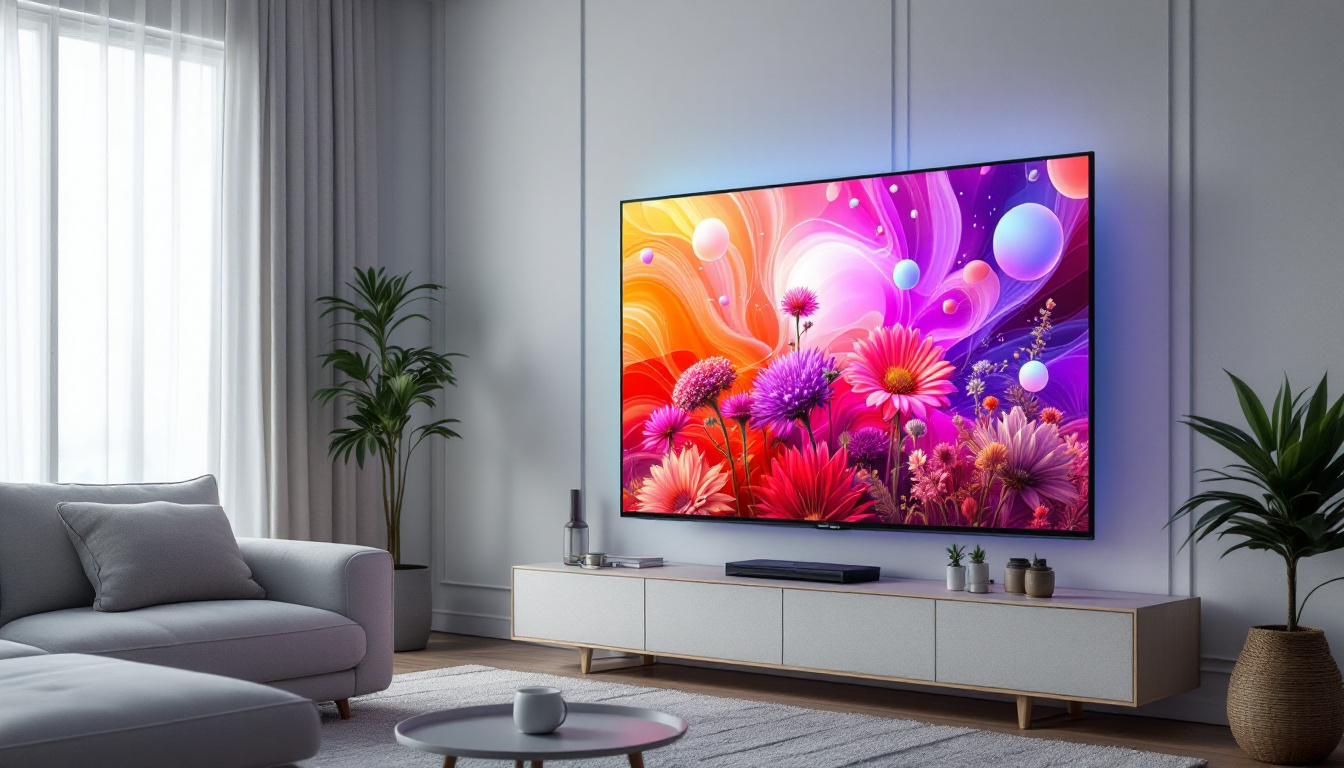In the world of television technology, the debate between LCD and LED displays is a topic that generates significant interest among consumers. Both technologies have their unique advantages and disadvantages, making it essential to understand their differences before making a purchase. This article delves into the nuances of LCD and LED TVs, exploring their features, benefits, and overall performance to help consumers make informed decisions.
Understanding LCD Technology
LCD, or Liquid Crystal Display, is a flat-panel display technology that uses liquid crystals to produce images. This technology has been around for several decades and has evolved significantly over time. LCD TVs are known for their slim profiles and lightweight designs, making them a popular choice for modern homes.
How LCD Works
LCD screens consist of two layers of polarized glass with a liquid crystal solution sandwiched between them. When an electric current passes through the liquid crystals, they align in such a way that they either block or allow light to pass through. This process creates the images that viewers see on the screen.
However, LCDs require a backlight to illuminate the display, as the liquid crystals themselves do not emit light. Traditionally, cold cathode fluorescent lamps (CCFL) were used as backlighting, but advancements in technology have introduced more efficient options. Today, many LCDs utilize LED backlighting, which not only enhances brightness but also improves energy efficiency and color reproduction. This shift has allowed manufacturers to create thinner displays while maintaining high-quality visuals.
Advantages of LCD TVs
One of the primary advantages of LCD TVs is their affordability. Generally, they are less expensive than their LED counterparts, making them an attractive option for budget-conscious consumers. Additionally, LCD TVs are available in a wide range of sizes, catering to various room dimensions and viewing preferences.
Another benefit is their performance in bright environments. LCD screens tend to handle ambient light better than other types of displays, making them suitable for well-lit rooms. Furthermore, LCD technology has improved over the years, resulting in better color accuracy and image quality. The introduction of technologies such as In-Plane Switching (IPS) has further enhanced viewing angles and color consistency, allowing for a more immersive viewing experience from various positions in the room.
Moreover, LCD TVs are often equipped with features that enhance user experience, such as smart capabilities that allow for streaming services and internet connectivity. This integration of technology enables viewers to access a wide array of content directly from their television, making it a central hub for entertainment. As a result, many consumers find that LCD TVs not only meet their visual needs but also align with their digital lifestyles, offering convenience and versatility in one package.
Exploring LED Technology
LED, or Light Emitting Diode, technology is often considered a subset of LCD technology. While LED TVs are technically LCDs, they utilize LED backlighting instead of traditional fluorescent lights. This distinction is crucial, as it significantly impacts the performance and overall quality of the display.
How LED Works
LED TVs use an array of small diodes to provide backlighting for the liquid crystals. These diodes can be arranged in various configurations, such as edge-lit or full-array, which affects the brightness, contrast, and overall image quality. Edge-lit LED TVs have LEDs placed around the perimeter of the screen, while full-array models feature a grid of LEDs behind the entire display.
This innovative approach allows for better control over brightness and contrast levels, resulting in deeper blacks and brighter whites. Additionally, many LED TVs come equipped with local dimming technology, which enhances the viewing experience by adjusting the brightness of specific areas of the screen based on the content being displayed.
Advantages of LED TVs
LED TVs offer several advantages over traditional LCDs. One of the most notable benefits is improved energy efficiency. LED backlighting consumes less power than CCFLs, making LED TVs more environmentally friendly and cost-effective in the long run.
Moreover, LED TVs typically provide superior picture quality. The enhanced contrast ratios and color accuracy contribute to a more immersive viewing experience. Additionally, many LED models support high dynamic range (HDR), which further elevates image quality by expanding the range of colors and brightness levels.
Comparing LCD and LED TVs
When comparing LCD and LED TVs, it’s essential to consider various factors, including picture quality, energy efficiency, and cost. While both technologies have their merits, the differences can significantly influence a consumer’s choice.
Picture Quality
In terms of picture quality, LED TVs generally outperform traditional LCDs. The use of LED backlighting allows for better contrast ratios and more vibrant colors, which enhances the overall viewing experience. This is particularly noticeable in darker scenes, where LED TVs can achieve deeper blacks thanks to local dimming technology.
However, not all LED TVs are created equal. Factors such as the quality of the panel, the type of backlighting used, and the processing capabilities of the TV can all impact picture quality. It’s crucial for consumers to research specific models to find one that meets their expectations.
Energy Efficiency
Energy efficiency is another area where LED TVs have the upper hand. The use of LED backlighting not only reduces power consumption but also contributes to a lower carbon footprint. In contrast, traditional LCDs with CCFL backlighting tend to consume more energy, making LED TVs a more sustainable choice.
For environmentally conscious consumers, this factor can be a significant consideration. Additionally, the long lifespan of LED technology means that consumers may save money on replacement costs over time.
Cost Considerations
When it comes to cost, traditional LCD TVs are generally more affordable than LED models. This price difference can be attributed to the technology used in the backlighting and the overall performance capabilities of the displays. For consumers on a tight budget, opting for an LCD TV may provide a satisfactory viewing experience without breaking the bank.
However, as technology continues to evolve, the price gap between LCD and LED TVs has been narrowing. Many consumers are willing to invest a bit more for the enhanced picture quality and energy efficiency that LED TVs offer. Ultimately, the decision will depend on individual preferences and budget constraints.
Choosing the Right TV for Your Needs
Deciding between an LCD and an LED TV involves considering personal preferences, viewing habits, and the environment in which the TV will be placed. Each technology has its strengths and weaknesses, making it essential to evaluate which features matter most to the viewer.
Viewing Environment
The viewing environment plays a significant role in determining which type of TV is best suited for a particular space. For rooms with ample natural light, an LCD TV may perform better due to its ability to handle bright conditions. Conversely, for darker environments, an LED TV’s superior contrast and color capabilities can enhance the viewing experience.
Additionally, the size of the room and the distance from the screen should also be taken into account. Larger screens may benefit from the enhanced picture quality of LED technology, while smaller screens may not require the same level of performance.
Content Consumption
Another factor to consider is the type of content that will be consumed on the TV. For viewers who primarily watch movies and TV shows, an LED TV may provide a more immersive experience, particularly with HDR content. On the other hand, for casual viewing, such as news or sports, an LCD TV may suffice.
Furthermore, gamers may prefer LED TVs for their faster response times and better color accuracy, which can enhance the gaming experience. Understanding how the TV will be used can help guide the decision-making process.
The Future of TV Technology
As technology continues to advance, the landscape of television displays is evolving rapidly. New innovations are emerging, including OLED (Organic Light Emitting Diode) and QLED (Quantum Dot LED) technologies, which offer even better picture quality and performance. These advancements may influence consumer preferences and shift the focus away from traditional LCD and LED technologies.
OLED Technology
OLED technology is gaining popularity due to its ability to produce true blacks and vibrant colors without the need for backlighting. Each pixel in an OLED display emits its own light, allowing for greater contrast and color accuracy. This technology is particularly appealing to cinephiles and those who prioritize picture quality.
However, OLED displays can be more expensive than both LCD and LED options, making them less accessible for budget-conscious consumers. As production costs decrease, it is likely that OLED technology will become more mainstream.
QLED Technology
QLED technology, developed by leading manufacturers, utilizes quantum dots to enhance color and brightness. This technology combines the benefits of LED backlighting with the vibrancy of quantum dots, resulting in stunning picture quality. QLED TVs are often positioned as premium options, appealing to consumers who want the best viewing experience.
As competition in the TV market heats up, consumers can expect to see more innovative technologies and features designed to enhance their viewing experience. Staying informed about these developments will help consumers make educated choices when purchasing a new television.
Conclusion
In conclusion, the debate between LCD and LED TVs is complex, with each technology offering distinct advantages and disadvantages. While traditional LCDs are generally more affordable, LED TVs provide superior picture quality, energy efficiency, and advanced features that can significantly enhance the viewing experience.
Ultimately, the choice between LCD and LED will depend on individual preferences, viewing habits, and budget constraints. By carefully considering these factors and staying informed about emerging technologies, consumers can make informed decisions that best suit their needs and preferences.
As the television market continues to evolve, keeping an eye on new advancements will ensure that viewers are well-equipped to choose the right display technology for their homes.
Discover the Future of Visual Experience with LumenMatrix
As you consider the right display technology for your home, why not experience the pinnacle of LED innovation with LumenMatrix? Our commitment to excellence in LED display modules means you get not just a TV, but a comprehensive visual solution. From captivating Indoor LED Wall Displays to dynamic Outdoor LED Wall Displays, and even specialized solutions like Vehicle LED Displays and LED Sports Displays, LumenMatrix is at the forefront of transforming your viewing experience. Embrace the future of digital signage and join us in revolutionizing visual communication. Check out LumenMatrix LED Display Solutions today and see the difference for yourself.































